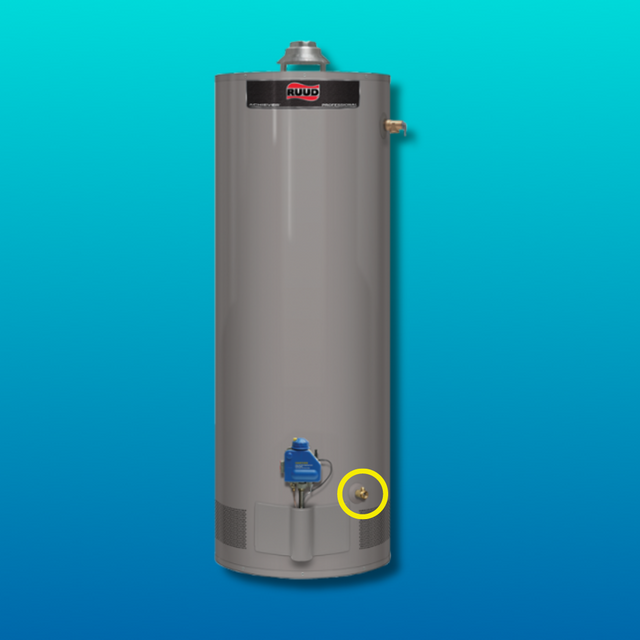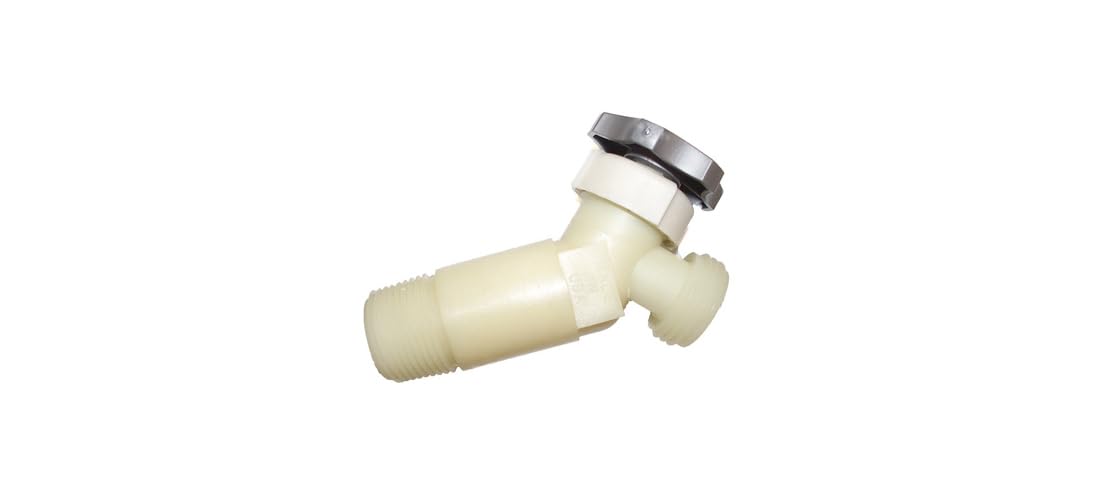Are you wondering why your water heater isn’t working as efficiently as it used to? The answer might be simpler than you think.
The size of your water heater drain valve could be playing a bigger role than you realize. This often-overlooked component can significantly impact your water heater’s performance and lifespan. By understanding the right size for your drain valve, you can ensure optimal efficiency and avoid unnecessary repairs.
Stick around, and you’ll discover how this small detail can make a big difference in your home. You’re about to find out everything you need to know about choosing the perfect size for your water heater drain valve. Ready to dive in?
Page Contents
- 1 Importance Of Drain Valve Size
- 2 Common Drain Valve Sizes
- 3 Factors Influencing Valve Size Choice
- 4 Pros And Cons Of Different Sizes
- 5 How To Measure Drain Valve Size
- 6 Replacing A Drain Valve
- 7 Tips For Maintaining Drain Valves
- 8 Troubleshooting Common Drain Valve Issues
- 9 When To Consult A Professional
- 10 Frequently Asked Questions
- 11 Conclusion
Importance Of Drain Valve Size
The drain valve size on a water heater matters a lot. It helps in quick draining. A small valve takes longer to empty water. A large valve speeds up the process. Homeowners save time with the right size. It also affects cleaning. A bigger valve allows easy flushing. This keeps the heater clean. A clean heater lasts longer. It saves money too. Regular cleaning prevents damage. The right valve size is key to maintenance.
Choosing the correct size is important. Not all heaters have the same size. Check your heater’s manual. It tells the right valve size. Some valves are half-inch. Others are three-quarters inch. Match the valve to the heater. This ensures proper function. A mismatch causes leaks. Leaks waste water. They also increase bills. Always use the correct size for efficiency.
Common Drain Valve Sizes
Drain valves come in different sizes. Half-inch and three-quarter inch are common. Small water heaters use smaller valves. Large heaters need bigger valves. The half-inch size works for homes. It fits most household heaters. Three-quarter inch is for larger systems. Big heaters need this size.
Brass and plastic are popular materials. Brass is strong. It lasts longer. Plastic is lighter. It’s easy to install. Choose the right size for your heater. Check the manual. It gives the right information. Wrong size can cause leaks. Leaks waste water. Be careful when choosing. Right size keeps water safe. Valves are important for heaters.
Factors Influencing Valve Size Choice
The size of your water heater affects the valve size. Bigger heaters often need bigger valves. This helps the water drain faster. Smaller heaters may use smaller valves. This ensures safety and efficiency.
Regular maintenance can influence valve choice. Frequent checks might need easier access. This can mean larger valves. Less frequent checks might use smaller valves. Choose wisely for easy maintenance.
Local plumbing rules impact valve size choice. Some areas have strict codes. These codes specify certain valve sizes. Follow the rules to avoid problems. Always check local guidelines before choosing.

Credit: www.uswhpro.com
Pros And Cons Of Different Sizes
Small valves fit tight spaces well. They are easy to manage. Water flows slowly through them. This can take longer to drain. Large valves allow faster water flow. Draining is quick. These valves need more space. They may not fit all heaters.
Medium-sized valves are a good balance. They work well in most heaters. Water flow is moderate. This ensures a steady drain. Installation is usually easy. They are a popular choice.
Each size has its benefits. Consider your needs. Think about space and speed. Choose the right valve for your heater.
How To Measure Drain Valve Size
Measuring the drain valve size is easy. First, turn off the water heater. Let it cool for safety. Next, find the drain valve. It is usually at the bottom of the heater. Now, use a ruler or tape. Measure across the valve opening. This gives you the diameter. The size is usually in inches. Common sizes are 3/4 inch or 1 inch. Check if it matches standard sizes. If unsure, take the valve to a store. They can help find the right size. Always ensure the new valve fits well. A good fit prevents leaks and damage.
Replacing A Drain Valve
You need basic tools. A wrench and a screwdriver are important. Don’t forget a bucket. You will need it for water. Have a towel ready. It will help with spills. Also, get pliers. They help remove old parts. Use gloves. They keep your hands safe.
First, turn off the heater. Then, wait for it to cool. Next, place the bucket under the valve. Use the wrench to loosen the valve. Water will start draining. Remove the old valve. Replace it with a new one. Tighten it with the wrench. Check for leaks. If none, you are done.
Always wear gloves. They protect from heat. Keep children away. Water might be hot. Use a towel to wipe spills. Make sure the heater is off. Double-check before starting. Don’t rush. Safety comes first.
Tips For Maintaining Drain Valves
Keep the drain valve clean. Dirt can block the valve. Use a soft brush for cleaning. Avoid using harsh chemicals.
Look for any leaks around the valve. Leaks can cause damage. Tighten loose connections with a wrench. Replace the valve if leaks persist.
Verify the size of the drain valve. A wrong size can cause problems. Measure the valve and compare with the water heater’s specifications.
Inspect the valve every few months. Check for rust or wear. Replace if necessary. Regular checks prevent major issues.

Credit: www.amazon.com
Troubleshooting Common Drain Valve Issues
Drain valves can sometimes leak. Leaking is a common problem with water heaters. It can waste water and cause damage. Tightening the valve can stop the leak. But be careful not to over-tighten.
Clogged valves are another issue. Sediment can block the flow. Flushing the tank helps remove sediment. This keeps the valve working. Regular maintenance prevents clogs.
Valves can also corrode over time. Rust makes the valve hard to open. If the valve sticks, it might need replacing. Lubricating the valve can help sometimes. Always check the valve for wear and tear.
When To Consult A Professional
There are times when a professional plumber is needed. Leaking valves should be addressed quickly. A professional can fix them properly.
Strange noises from the heater are not normal. These sounds might mean there’s a problem inside. A professional can diagnose the issue.
If the water pressure is too low, it can be a sign. This might mean there is a blockage.
Rusty water is another sign of trouble. It could mean the tank is corroding. A professional should be called to inspect it.
It’s always better to be safe. A professional’s help ensures the heater works well.

Credit: www.amazon.com
Frequently Asked Questions
What Size Is The Drain Pipe On A Water Heater?
The drain pipe on a water heater is typically ¾ inches in diameter. This standard size ensures efficient drainage. Always check your heater’s specifications for exact measurements. Proper installation prevents leaks and maintains optimal performance.
What Size Is A Water Heater Relief Valve?
A water heater relief valve typically measures 3/4 inch in diameter. It ensures safe pressure release. Always check the specific requirements of your water heater model for accurate sizing. Regular maintenance and inspection help prevent leaks and malfunctions, ensuring optimal performance and safety.
What Is The Minimum Drain Valve Inlet Size For A Tank Type Water Heater?
The minimum drain valve inlet size for a tank-type water heater is 3/4 inch. This size ensures efficient drainage and maintenance. Always check manufacturer guidelines for specific requirements related to your model. Proper sizing can prevent clogging and ensure smooth operation of your water heater system.
What Size Drain Pan Do I Need For My Water Heater?
Choose a drain pan at least two inches larger in diameter than your water heater. Ensure it’s deep enough to hold potential leaks. This size allows for proper drainage and prevents overflow. Check compatibility with your water heater model and local building codes for the best fit.
Conclusion
Choosing the right water heater drain valve size is crucial. It ensures efficient water flow. Proper size prevents leaks and clogs. It extends your heater’s lifespan. Always check your heater’s specifications first. Consult a professional if unsure. Regular maintenance is key for optimal performance.
This keeps your heater running smoothly. It saves you time and money in the long run. Remember, a well-maintained heater works better. Enjoy consistent hot water every day. Your home deserves the best care. Keep your water heater efficient and reliable.
